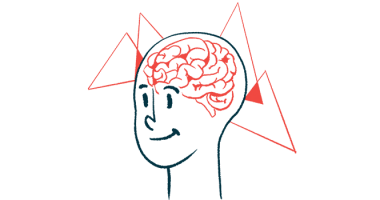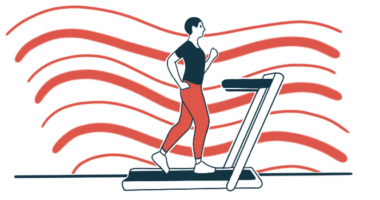Variety of Ways to Help Patients With Walking Not Widely Known

People with gait difficulties due to Parkinson’s disease make adjustments that aid in walking, but many are not aware of the variety of “compensation strategies” available to them, a study based on a patient survey reported.
Some of these strategies may be more useful in certain situations or to a given individual, and less helpful with others, its researchers wrote.
“Our findings suggest that a ‘one-size-fits-all’ approach doesn’t work, because different contexts might require different strategies, or because individuals simply respond better to one strategy compared to another,” Anouk Tosserams, MD, of Radboud University Medical Center, the study’s lead author, said in a press release.
“We need to go a step further and teach people about all the available compensation strategies, for example through a dedicated online educational platform. This may help each person with Parkinson’s find the strategy that works best for them,” Tosserams added.
The study, “Perception and Use of Compensation Strategies for Gait Impairment by Persons With Parkinson Disease,” was published in Neurology.
Walking or gait problems are among the more disabling of Parkinson’s symptoms, and can increase the risk of injuries and falls. Many patients with walking difficulties come up with ways that help them cope in day-to-day life, like adopting a particular way of walking or taking steps paced by a particular rhythm.
Two years ago, researchers compiled a list of seven categories of compensation strategies that are often used by people with Parkinson’s:
- External cuing (walking to an audible beat, like a metronome, or wearing vibrating socks)
- Internal cuing (walking to a count in one’s head)
- Changing a required balance (e.g., making wider turns so that it’s easier to stay balanced, or using a walking aid)
- Adopting a new walking pattern (for instance, walking backwards or with raised knees)
- Altering the mental state (e.g., relaxation or breathing exercises)
- Action observation and motor imagery (mimicking someone else’s walk or visualizing steps to take)
- Other forms of moving the legs forward (like bicycling or crawling)
While these strategies have been characterized, and have been reported to be useful, little is known about what adaptations might be most effective in addressing particular issues.
“Consequently, in current daily practice, the search for appropriate compensation strategies for a given person with PD [Parkinson’s disease] remains a time-consuming trial-and-error process. Moreover, individual patients are rarely offered an opportunity to systematically try out the multiple different variants of compensation strategies until they find a specific one that suits their needs and abilities best,” the researchers wrote.
A team of investigators in The Netherlands conducted an online survey of Parkinson’s patients with self-reported difficulty walking, including problems with balance, falling, staggering, and freezing, between March and June 2020.
In total, 4,324 patients responded — most from the U.S. (participants in the Fox Insight observational study), and others from the ParkinsonNEXT platform in the Netherlands. Of these people, 55.3% were men, and the average age was 67.8. Few respondents reported substantial cognitive impairment.
Over a third (35.3%) of the respondents said that walking difficulties hindered their ability to function in day-to-day life. Additionally, more than half (52.4%) reported a fall in the prior year — in 385 cases, the fall caused an injury that needed medical attention.
About one in six respondents — 16.7% — said they had never heard of any of the seven compensation strategies, and just 3.5% were aware of all seven strategies. The median number of these compensatory approaches that respondents had heard of was three.
The most well-known were internal and external cuing, known to 46.9% and 44.8% of respondents, respectively. The least well-known was action observation and motor imagery (14.3%).
Just under a third (32.2%) of participants had ever received targeted advice from a professional about using these kinds of compensation strategies to make walking easier. Still, a vast majority, 75.2%, said they wanted to learn more about these approaches.
“Compensation strategies for gait impairments are commonly used by persons with [Parkinson’s disease], but their awareness of the full spectrum of available strategies is limited,” the researchers wrote.
About two in three (64.7%) respondents said that they were currently using a compensation strategy in their day-to-day life. Changing the balance requirements was the most commonly used, followed by internal cuing, and altered mental state.
Researchers also noted several trends in how different compensation strategies were used in various situations.
“While most respondents reported that application of compensation strategies positively affected their gait, not every respondent seemed to benefit from every category of strategies,” they wrote. “Importantly, the efficacy of compensation strategies varied greatly depending on the context in which they were applied.”
For instance, internal cuing was commonly reported as helpful for starting to walk (73% success rate), but less so for stopping walking (47%). Similarly, action observation and motor imagery was often helpful outdoors (83%), but not so much in narrow spaces (55%).
In general, compensation strategies were most effective when walking outdoors or starting a walk, and least effective when trying to stop walking or cross a doorway.
Taken together, “the choice of compensation strategies should be tailored to the individual patient, as well as to the contexts in which the strategies need to be applied,” the team concluded.







